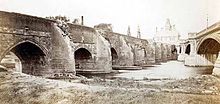
Marriott Ogle Tarbotton MICE, FGS, FRMS, was born in Leeds on 6 December 1834 and died in Nottingham on 6 March 1887. He was Borough Engineer for Nottingham from 1859.

Marriott Ogle Tarbotton MICE, FGS, FRMS, was born in Leeds on 6 December 1834 and died in Nottingham on 6 March 1887. He was Borough Engineer for Nottingham from 1859.
Tarbotton was Borough Engineer at Wakefield from 1855 until he was appointed to the same position in Nottingham in 1859, a position he held until 1880 when he was succeeded by his assistant Arthur Brown.
He was awarded membership in the Institution of Civil Engineers in 1862. [1]
He culverted the River Leen, a source of disease outbreaks. He also planned and oversaw the construction of the underground sewerage system for the city, the first outside London. [2]
He was responsible for the design of Trent Bridge [3] and Papplewick Pumping Station.
He was engineer to the Nottingham Gas Company.
In 1866 he provided a viaduct over the Midland Railway on Carrington Street, Nottingham.
He was a member of the British Meteorological Society and published detailed weather observations in Nottingham over 12 years. [4]
Tarbotton was the eldest son of Samuel Tarbotton (1801 - 1850), Druggist and Drysalter and his wife Grace Ogle (1802-1884).
He married Emma Maria Stanfield (ca. 1832 - 1915) on 8 September 1857.
They had children:
In 1851 he was living in Northallerton in the house of Harry J Hebert (Civil Engineer). In 1871 he was living at 30 Newstead Grove in Nottingham. By 1881 he was living in South Road, The Park, Nottingham.
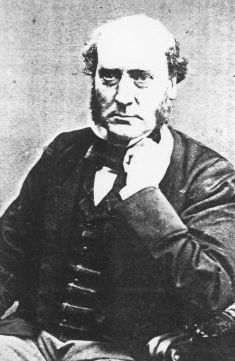
Sir George Gilbert Scott, largely known as Sir Gilbert Scott, was a prolific English Gothic Revival architect, chiefly associated with the design, building and renovation of churches and cathedrals, although he started his career as a leading designer of workhouses. Over 800 buildings were designed or altered by him.
Peter William Barlow was an English civil engineer, particularly associated with railways, bridges, the design of tunnels and the development of tunnelling techniques. In 1864 he patented a design for a cylindrical tunnelling shield, and obtained a provisional patent in 1868 for an improved design.
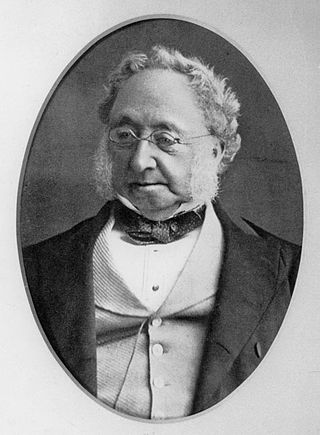
Thomas Hawksley was an English civil engineer of the 19th century, particularly associated with early water supply and coal gas engineering projects. Hawksley was, with John Frederick Bateman, the leading British water engineer of the nineteenth century and was personally responsible for upwards of 150 water-supply schemes, in the British Isles and overseas.

William Henry Barlow FRS FRSE FICE MIMechE was an English civil engineer of the 19th century, particularly associated with railway engineering projects. Barlow was involved in many engineering enterprises. He was engineer for the Midland Railway on its London extension and designed the company's London terminus at St Pancras.

The River Leen is a 15-mile (24 km) long tributary of the River Trent that flows through Nottinghamshire, and the city of Nottingham in the East Midlands of England.

Stoke Bardolph is a village and civil parish in the Gedling district of Nottinghamshire. The population of the civil parish taken at the 2011 census was 170. It is to the east of Nottingham, and on the west bank of the River Trent. Nearby places include Burton Joyce and Radcliffe on Trent.

The Arboretum is a city park in Nottingham, England.
Sir Douglas Strutt Galton was a British engineer. He became a captain in the Royal Engineers and Secretary to the Railway Department, Board of Trade. In 1866 he was a member of the Royal Commission on Railways. From 1869 to 1875 he was Directory of Public Works and Buildings.

Papplewick Pumping Station, situated in open agricultural land approximately 3 miles (4.8 km) by road from the Nottinghamshire village of Papplewick, was built by Nottingham Corporation Water Department between 1881 and 1884 to pump water from the Bunter sandstone to provide drinking water to the City of Nottingham, in England. Two beam engines, supplied with steam by six Lancashire boilers, were housed in Gothic Revival buildings. Apart from changes to the boiler grates, the equipment remained in its original form until the station was decommissioned in 1969, when it was replaced by four submersible electric pumps.

Edmund Wragge was a British-born and trained engineer who constructed the first common-carrier narrow gauge railways in North America. He was invited back to Britain in 1897 to engineer the difficult approaches of the Great Central Railway to a new terminus at London (Marylebone).

The City of Nottingham Water Department (1912–1974), formerly the Nottingham Corporation Water Department (1880–1912), was responsible for the supply of water to Nottingham from 1880 to 1974. The first water supply company in the town was the Nottingham Waterworks Company, established in 1696, which took water from the River Leen, and later from springs at Scotholme, when the river became polluted. Other companies were set up in the late 18th century and in 1824, while in 1826 the Trent Water Company was established. They employed Thomas Hawksley as their engineer, who became one of the great water engineers of the period, and Nottingham had the first constant pressurised water supply system in the country. The various companies amalgamated in 1845, and Hawksley remained as the consulting engineer until 1879.

Nathaniel Beardmore was a British civil engineer known for his textbook on hydraulic engineering, and his work on water projects associated with the River Lea.

Micaiah John Muller Hill FRS (1856–1929) was an English mathematician, known for Hill's spherical vortex and Hill's tetrahedra.

John Breedon Everard was an English civil engineer and architect strongly associated with works in Leicestershire, and co-founder of the firm Pick Everard.

The Scinde Railway was one of the pioneering railway companies that operated in Sind during the British Raj between 1855 and 1885.
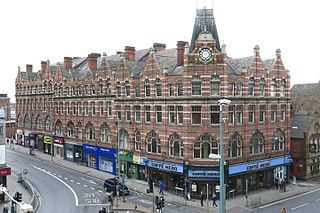
Carrington Street is a street in Nottingham city centre between Nottingham station and Broadmarsh.
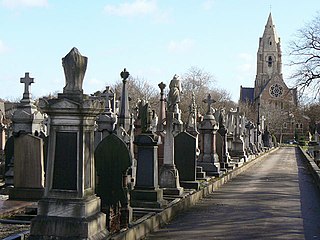
Church Cemetery, also known as Rock Cemetery, is a place of burial in Nottingham, England which is Grade II* listed. It is situated at the south-east corner of Forest Recreation Ground.

Richard Allen was a stationer and publisher in Nottingham.

Lieut-Colonel Herbert Walker FRIBA, M Inst CE, FSI, was an architect, surveyor and civil engineer based in Nottingham from 1870 to 1923.
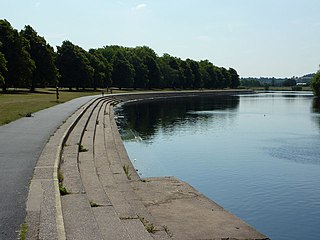
Arthur Brown M.Inst. C.E. was City Engineer for Nottingham, England from 1880 to 1919.